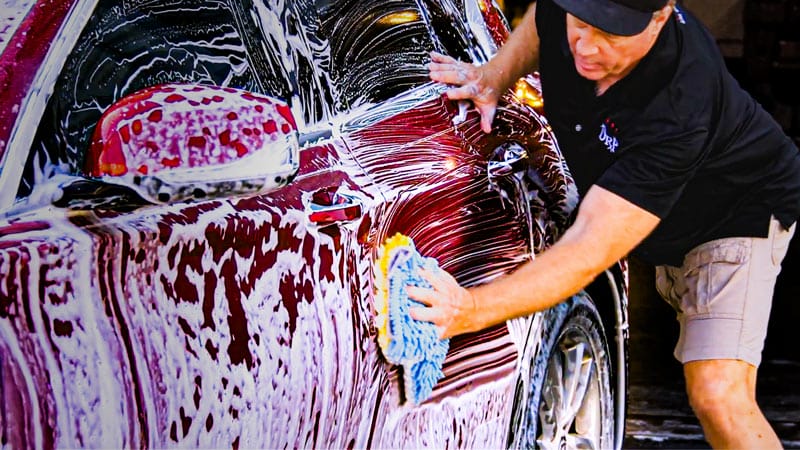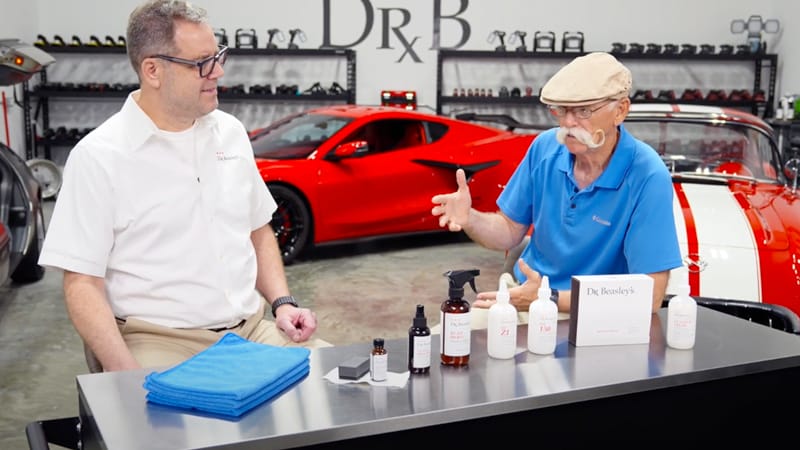What is the difference between polishing and waxing a car? People who are new to car care ask this question all the time, and the answer is quite simple.
Polishing is a process used to abrade the surface of car paint to level it and thus remove below surface defects like swirls, scratches, water spots and oxidation. The leveling process, usually performed via some type of polisher and buffing pad, removes small amounts of the top surface of the paint until it’s even or equal with the lowest depths of the defects you’re trying to remove. This also makes the paint glossier and more reflective.
Waxing is a process that seals the paint in a coat of wax, leaving behind a layer of protection against the elements as well as normal wear-and-tear, like washing the car. In most cases, waxing will also increase gloss, shine, and richness of color.
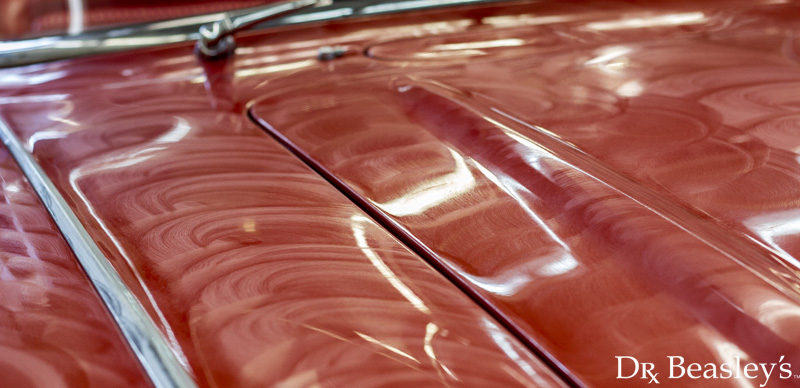
So what’s the difference? To put it simply:
Polishing removes paint, while waxing protects it.
What Does Polishing a Car Do?
Polishing a car’s paint removes defects like swirls, scratches, water spots and oxidation. In a perfect world, we would never need to polish the paint on our cars as the paint would stay perfect over the service life of the car. The fact is, however, the paint on a daily driver is constantly under attack from a host of villains.
- Contaminated water like acid rain or alkaline rain.
- Airborne pollution and industrial fallout that can land on your car’s finish and mix with moisture like morning dew or rain to form a corrosive film.
- Automatic car washes, both commercial and the types that dealerships use to wash your car. The spinning brushes or cloth mops scratch your car’s paint leaving millions of swirls behind that opens up the paint for more damage as well as making the paint look hazy and dull.
- Hand washing induced swirls and scratches caused by contaminated wash mitts and drying towels.
Polishing will REMOVE the above defects and restore a pristine finish that you would then PROTECT by waxing the paint. Thus, understanding the difference in how a polish works as compared to a wax makes it easy to understand why they are far from the same and it’s important to use the correct process depending upon the needs of the paint on our car.
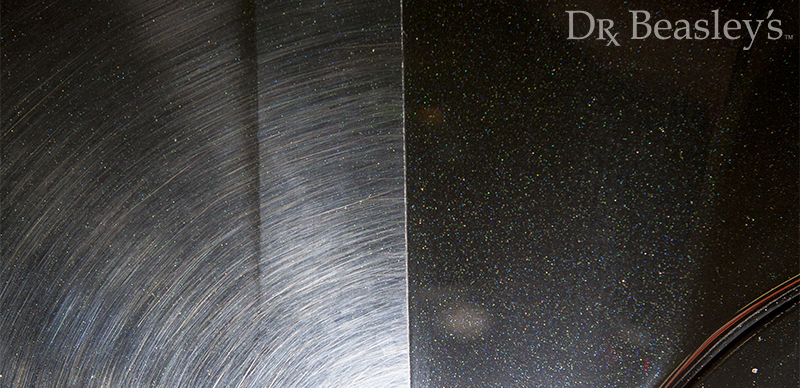
What Does Waxing a Car Do?
Waxing a car applies a coating of wax to the paint. The wax keeps contaminants from sticking to the paint and helps resist swirl mark scratches from washing and drying the paint. Wax also produces a reflective shine, increasing the paint’s level of gloss. Overall, it makes the paint look better, easier to clean and less likely to scratch.
What’s the Difference Between Polish, Wax and AIO?
A true polish is intended to be used for a single, dedicated process — that is, it’s formulated to ONLY polish or abrade the paint surface.
A true wax, also called a finishing wax or show car wax, is also intended to be used for a single, dedicated process — that is, it’s formulated to only PROTECT the paint surface as well as create gloss and shine.
An AIO, which stands for All-in-One, is like a combination of polish and wax. These types of products (also called cleaner/waxes) will do 3 things in a single step:
- Clean or abrade the paint to remove defects like swirls, scratches, water spots and/or oxidation.
- Polish the surface to a smooth high gloss with good depth and reflectivity.
- Seal the paint with some form of protection ingredients. Common protection ingredients can include, carnauba wax, synthetic or polymer-based protection materials and/or ceramic nano-structures.
An AIO is a great time saver as you can both polish and wax at the same time. This means you can tackle your car’s finish with a single process. Using a wax is a single process but using a polish plus a wax means doing two steps or processes to the car.
AIO is normally used for paint that is neglected and needs thorough polishing. If you’re working on a brand new car or an older car where the paint is still in new or like-new condition, then the paint will not need polishing, and using a dedicated wax will be the right option.
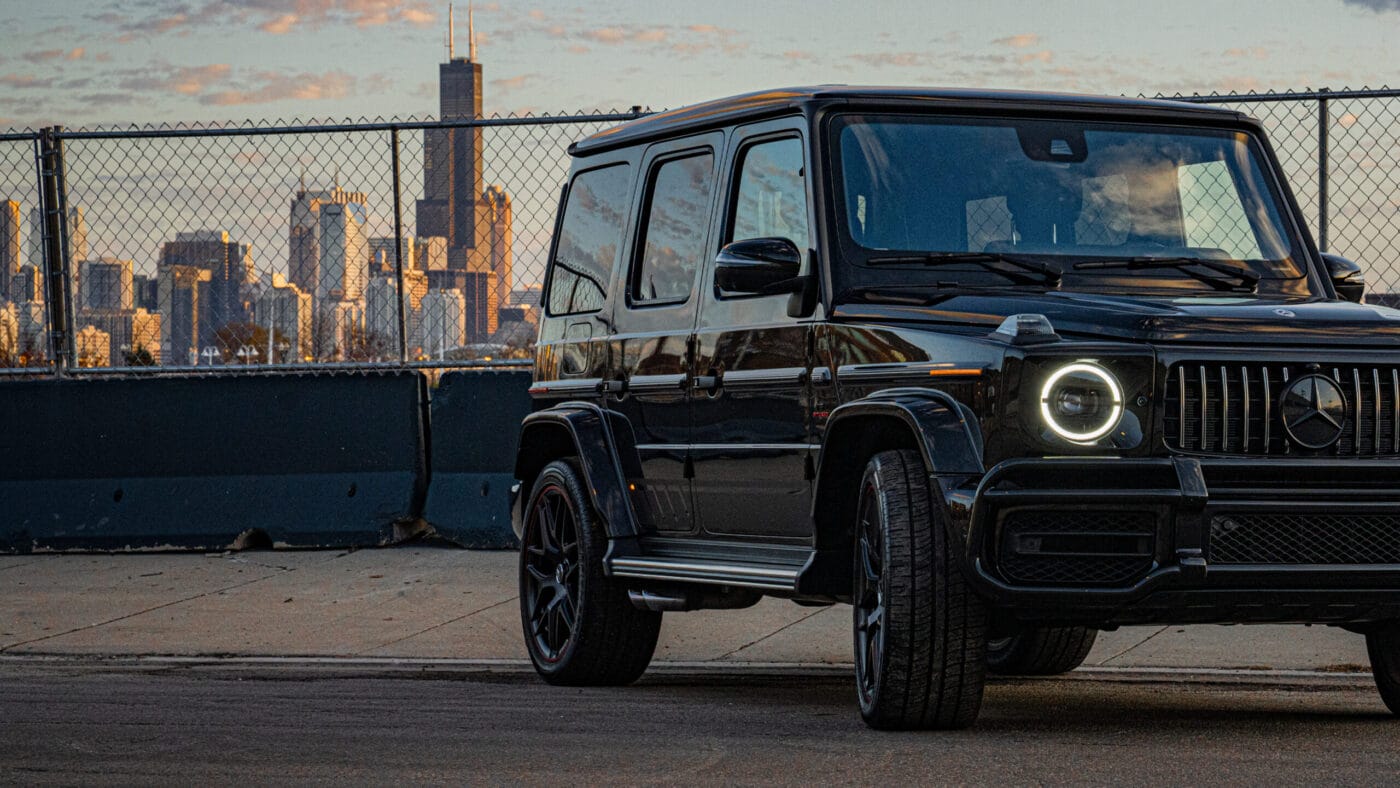
Final Thoughts
There’s a huge difference between polishing and waxing and now that you know the difference, the next step is to wash and dry your car and then inspect the current condition of the paint both visually using bright light and tactically, using the Baggie Test. The results from your inspection will tell you which process is right for your car’s paint, either polishing or waxing.
Got Questions? Ask Me!
I’ve been answering car detailing questions professionally since 2002 and moving forward, if after reading this article you have any questions about polishing and waxing, or how to use an AIO, my contact information is below, reach out to me, I’m always happy to help.
Would You Like to Learn How to Machine Polish Like a Pro?
- Would you like to take your detailing skills to a higher level?
- Do you find you learn better by doing versus sitting in a chair looking at a PowerPoint presentation about car detailing?
Here at Dr. Beasley’s O.R., (Operating Room), in sunny Stuart, Florida, we teach the most hands-on car and boat detailing classes on planet Earth. And we prove it too. You can find write-ups on the Dr. Beasley’s Blog that photo-documents just how hands-on our classes are plus you’ll see the kinds of cars and boats you’ll be training on.
Click the link below to find the dates, locations, topics, and prices for all upcoming detailing classes.
Upcoming Detailing Classes – Prices – Info – Topics – Locations
And if you ever have any questions, always feel free to reach out to me personally via text, phone call or email.
I hope to see you in a future detailing class!
Sincerely,
Mike Phillips
Chief Education Officer for Dr. Beasley’s
Mike@drbeasleys.com
760-515-0444

